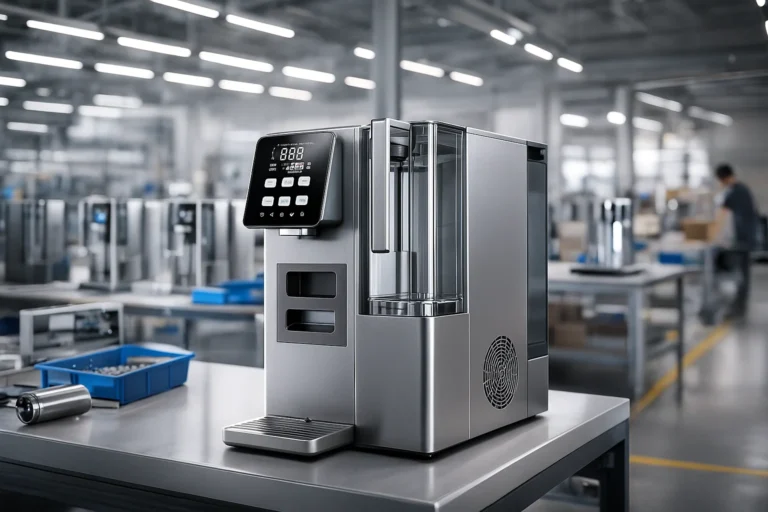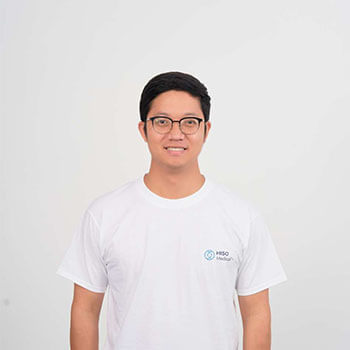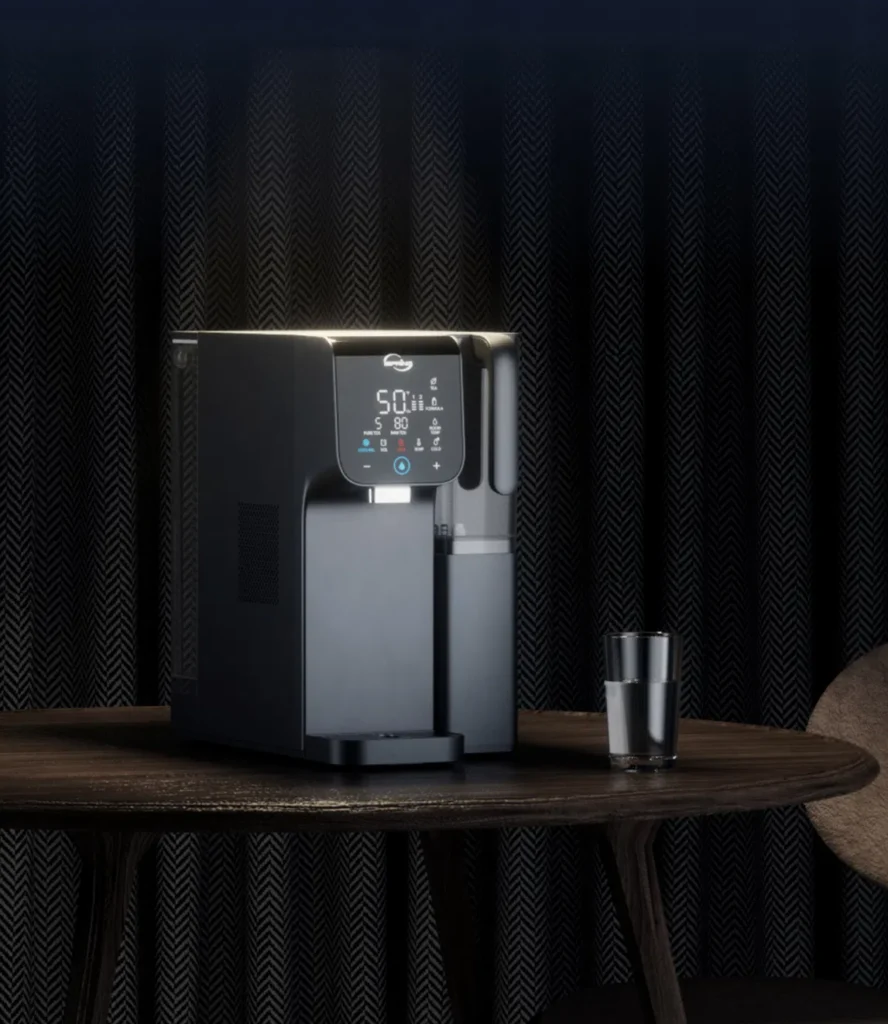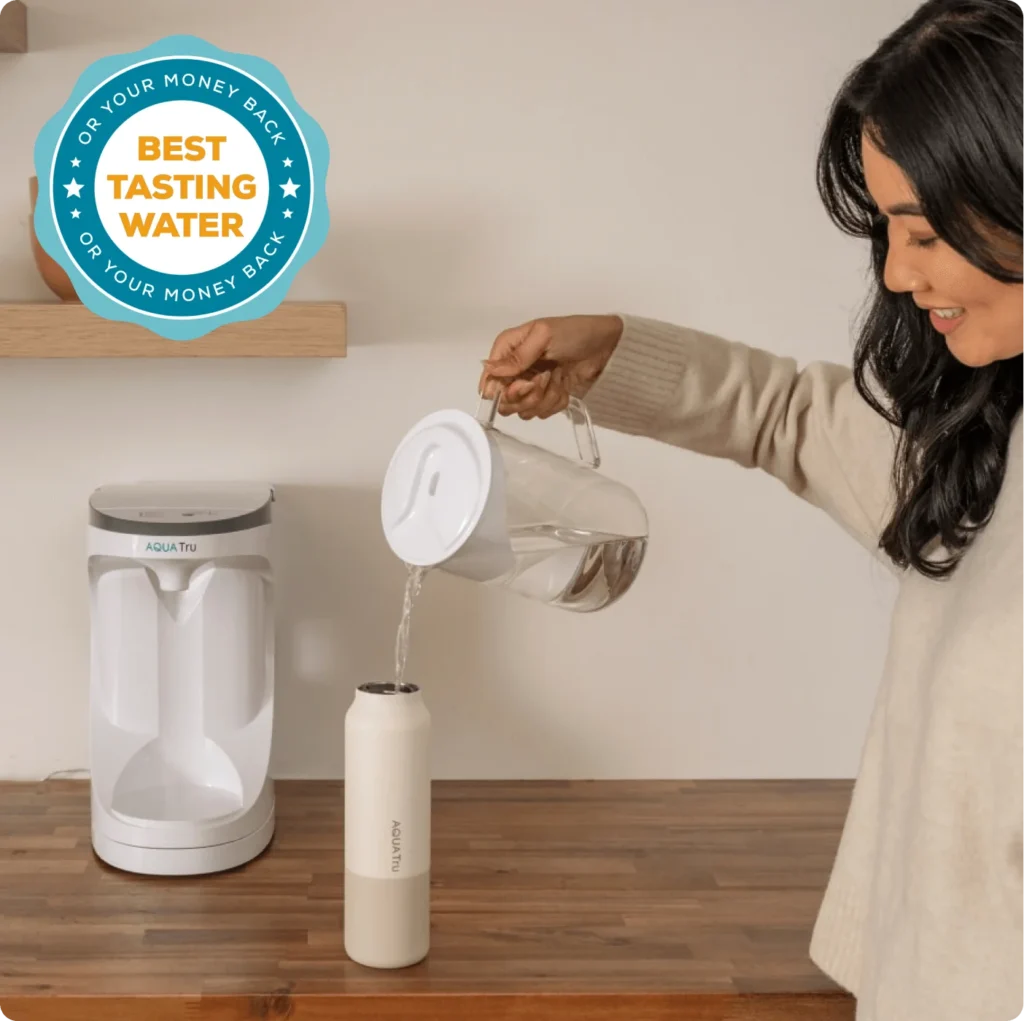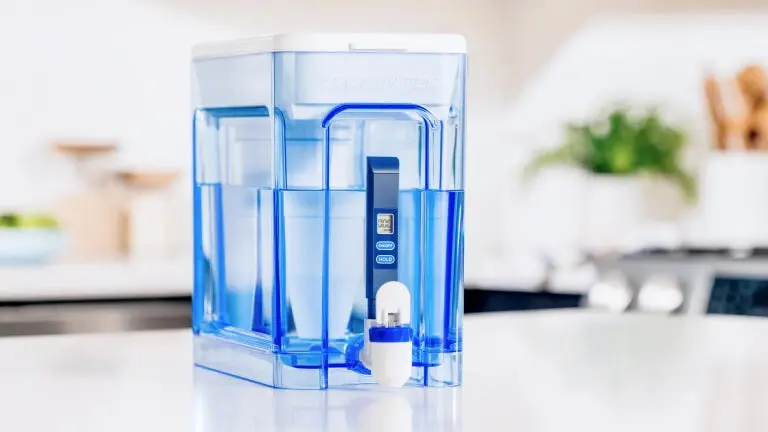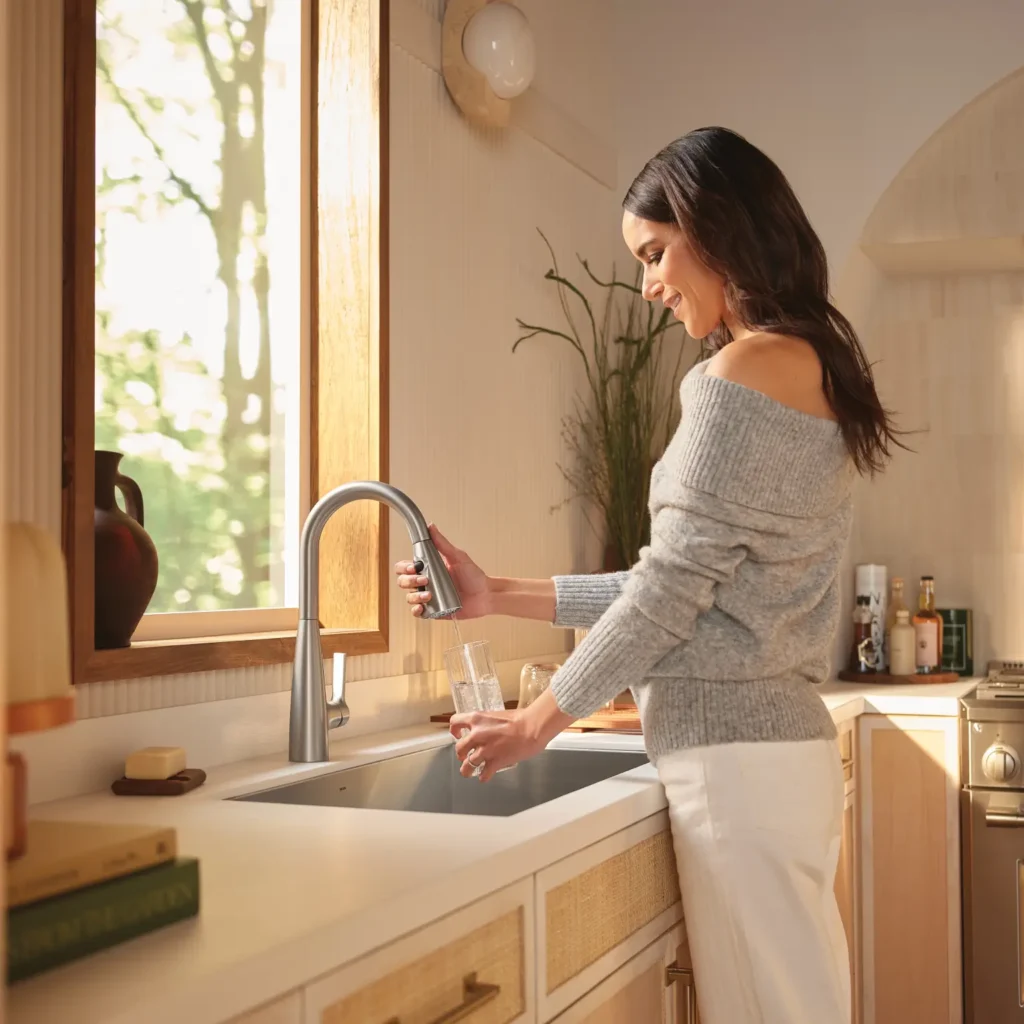For B2B and D2C customers looking to partner with, distribute, or understand the production backbone of Brita water purifiers, the question “Where are Brita products manufactured?” opens a window into a surprisingly complex, bifurcated, and globalized supply chain. Unlike most consumer products tied to a single corporate entity and production model, Brita water purifiers are produced by two entirely different companies, each with its own supply chain strategies, manufacturing philosophies, and regional rights. This rare dual-brand ownership model has created distinct product ecosystems with implications that go far beyond geography.
In short:
- In North and South America, Brita products are manufactured and sold by The Clorox Company, a U.S.-based multinational corporation known for its expansive consumer brand portfolio and cost-optimized operations.
- In Europe, Asia, Africa, and Australia, Brita products are developed, manufactured, and distributed by Brita SE, a German, family-owned company that originally created the brand and continues to push innovation in water filtration technologies.
This unusual split—borne of a 2000 licensing and brand acquisition agreement—has profound implications for manufacturing origins, product quality, sustainability practices, pricing strategies, and partnership opportunities across global markets.
Understanding the Dual Ownership of Brita
The split between Brita SE and The Clorox Company dates back to a pivotal decision in 2000, when Brita GmbH (now Brita SE) sold the exclusive rights to the brand in North and South America to Clorox. The rationale was strategic: allow each company to scale independently in their respective hemispheres while focusing on core competencies. The result is a brand that is global in name, but local in execution.
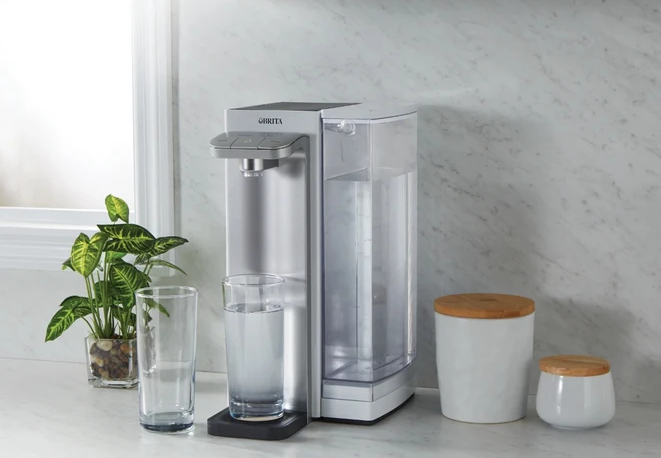
Two Britas, Two Worlds
-
Brita SE, headquartered in Taunusstein, Germany, controls the brand in 69 countries outside the Americas. It retains the original engineering, design IP, and environmental innovation pipeline that defines Brita in Europe and much of the rest of the world. The company emphasizes German engineering, vertical manufacturing integration, and sustainability-focused innovation, particularly in the commercial and institutional water filtration sectors.
-
Clorox (Brita LP), headquartered in Oakland, California, owns the rights to Brita across the United States, Canada, Mexico, and all of Latin America. Clorox has incorporated Brita into its larger portfolio of mass-market brands, positioning it as a high-volume, accessible, and cost-effective product line, backed by global sourcing and aggressive distribution strategies.
While both companies use the same brand name and often similar marketing themes around “clean water” and “filtering solutions,” their products are not interchangeable. They differ in design, materials, certifications, and even performance specs, due to being developed under separate regulatory and engineering frameworks.
Brita SE: European-Engineered Manufacturing for Global Distribution
For partners and customers in Europe, Asia, Africa, or Oceania, Brita SE is the entity behind every pitcher, filter, and water dispenser bearing the BRITA name. This company has turned its manufacturing strategy into a core pillar of brand equity, focusing on precision engineering, EU regulatory compliance, and sustainable product lifecycles.
Transparent and Specialized Production Network
Brita SE’s operations revolve around transparency, quality assurance, and specialization across regional markets. The company openly discloses the locations and functions of its main production facilities—a level of visibility that appeals to procurement teams, retailers, and institutional buyers prioritizing traceability and ESG alignment.
| Country | Facility Function |
|---|---|
| Germany | Global HQ, R\&D, filter cartridge recycling & regeneration |
| UK | Commercial and residential filtration (BRITA Professional) |
| Italy | High-end dispenser production (BRITA VIVREAU) |
| China | Regional manufacturing for Asian markets only |
| Switzerland | Specialized EU production (specifics not disclosed) |
Strategic Role of Manufacturing Hubs
-
Germany (Taunusstein)
Home to Brita SE’s global headquarters, this site is the nucleus of research, innovation, and sustainability initiatives. Notably, the facility houses a proprietary recycling plant where used filter cartridges are disassembled, cleaned, and re-filled with regenerated ion-exchange resin. This closed-loop system is a hallmark of Brita SE’s environmental leadership, setting it apart from many competitors in the filtration space. -
United Kingdom (Bicester)
This facility focuses on BRITA Professional, Brita SE’s commercial-grade line targeting hospitality, foodservice, and office segments. Following the acquisition of Vivreau UK, Brita SE has transformed the UK site into a critical hub for high-capacity, plumbed-in filtration systems, tailored for professional environments. -
Italy (Arsago Seprio)
Dedicated to the production of BRITA VIVREAU water dispensers, this facility represents a targeted investment in high-margin, design-forward hydration solutions for corporate offices, hotels, and hospitals. The location was selected for its proximity to high-end appliance manufacturing clusters and engineering talent. -
China
Serving the Asian market only, this factory follows Brita SE’s “in-region, for-region” philosophy, which emphasizes reducing shipping emissions, complying with local regulations, and responding quickly to regional demand. -
Switzerland (Neudorf)
While detailed disclosures are limited, the Swiss site is believed to support niche production and EU overflow, reinforcing the company’s European manufacturing backbone.
Supply Chain Strengths
Brita SE’s model is anchored in vertical integration, regional specialization, and EU-level environmental standards. These strengths make the company an attractive partner for buyers focused on:
- Sustainability reporting
- Filter lifecycle management
- Certified materials traceability
- Premium brand positioning
Unlike many mass-market manufacturers, Brita SE can offer closed-loop recycling, EU-made components, and long-term partnership stability—advantages that matter in regulated industries like healthcare, hospitality, and education.

The Clorox Company: Globalized Efficiency for the Mass Market
In the Americas, the Brita you see on store shelves is a product of The Clorox Company, one of the United States’ most prominent consumer packaged goods firms. With annual revenues exceeding \$7 billion, Clorox approaches Brita as part of its broader portfolio, which includes household names like Glad, Burt’s Bees, and Pine-Sol.
A Cost-Optimized, Multi-Regional Manufacturing Strategy
Clorox does not publicly list the precise manufacturing locations of its Brita products. However, by triangulating data from import records, product labels, and logistics databases, the following picture emerges:
| Country | Role in Brita Production for Clorox |
|---|---|
| China | High-volume production and global component sourcing |
| Dominican Republic | Final assembly of pitchers and dispensers |
| Canada | Filter cartridge production and distribution |
| USA | Reserved for the premium Brita PRO product line |
Despite operating 33 facilities across the U.S., Clorox has offshored most production of its Brita-branded products, likely due to cost efficiency and logistical flexibility.
The “Made in” Puzzle
Clorox’s labeling often reads:
- “Made in China”
- “Made in Dominican Republic of global components”
- “Made in Canada of global components”
This wording reflects a dispersed global supply chain, where assembly is separated from material origin. For buyers, this means the product’s country of final assembly may differ significantly from where its filter media, plastics, or internal components were actually manufactured. This distinction can have implications for tariffs, certifications, and country-of-origin claims.
Whether under Clorox or Brita SE, every Brita water purifier is the result of a multi-layered global supply chain. Components are sourced from agriculture, petrochemicals, and advanced materials sectors—then assembled into a consumer-facing product that appears deceptively simple.
Core Filter Media
-
Activated Carbon (from Coconut Shells):
Typically sourced from Southeast Asia (Indonesia, Philippines) or Latin America, coconut-based carbon is processed in dedicated factories in the U.S., China, or Europe. It’s responsible for chlorine reduction and odor elimination in Brita filters. -
Ion-Exchange Resin:
These synthetic polymer beads remove heavy metals like lead and copper. Manufacturers include Purolite (USA), Lanxess (Germany), and Sunresin (China). Resin quality impacts performance longevity and chemical stability.
Plastic and Structural Components
-
Pitcher Body:
Made from BPA-free SMMA or SAN plastics, typically supplied by global petrochemical firms. While lightweight, they must withstand repeated use and exposure to water and temperature changes. -
Lid & Filter Casing:
Produced using polypropylene (PP)—a versatile, recyclable plastic ideal for injection molding and food-grade safety. -
Handles & Grips:
Often composed of Santoprene™, a soft-touch thermoplastic elastomer manufactured under license from ExxonMobil. Used for ergonomic, durable design finishes.
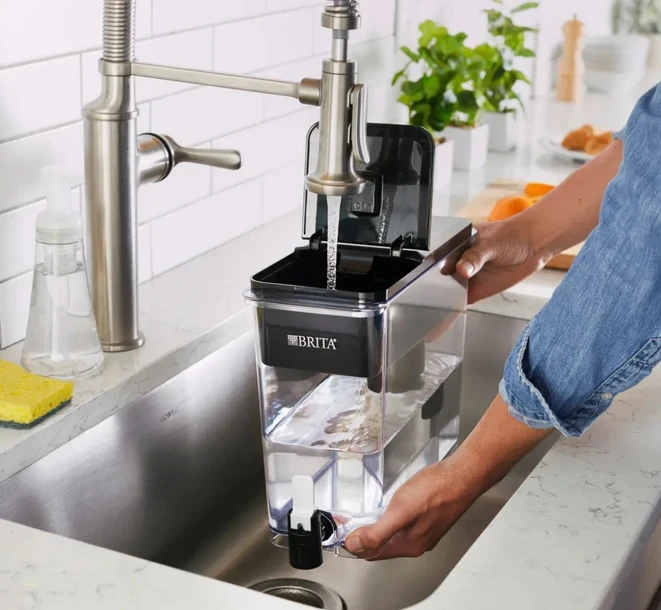
Brita PRO: The Domestic Outlier in the U.S.
A notable exception within Clorox’s offshoring strategy is the Brita PRO line—a professional-grade filtration system designed for whole-home and commercial use, typically installed by licensed contractors.
- Manufactured in the U.S., with end-to-end quality control
- Certified by IAPMO and NSF International for performance and safety
- Targets high-value channels, such as builders, HVAC installers, and home system integrators
This product tier allows Clorox to cater to buyers who require “Made in USA” assurances, particularly in sectors governed by local sourcing mandates or premium branding requirements.
Strategic Takeaways for B2B and D2C Stakeholders
For B2B Distributors and Retailers
Your sourcing strategy must align with the entity behind the Brita product:
-
Selling in Europe, Asia, Africa, or Oceania?
You’re working with Brita SE, where European quality, regulatory alignment, and environmental certifications are selling points. Partnerships here benefit from value-based branding and technical support. -
Selling in the Americas?
You’re working with Clorox, which offers reliable mass-market scalability, retail infrastructure, and cost competitiveness. Useful for high-velocity channels and seasonal SKU expansion.
For D2C Brands and Private Labels
-
Prioritize sustainability and origin transparency?
Partner with Brita SE or its distributors. Their story is aligned with eco-conscious branding. -
Target price-sensitive markets or need volume?
Clorox’s model offers economies of scale, reliable supply, and retail-tested SKUs. -
Want U.S.-made filtration solutions for premium positioning?
Consider Brita PRO, with its domestic manufacturing and industry certifications.
Risks and Opportunities in the Brita Supply Chain
| Entity | Primary Risk | Competitive Opportunity |
|---|---|---|
| Brita SE | Higher costs due to EU production | Differentiation through traceable quality and ESG |
| Clorox | Offshoring risks, lower transparency | Scale, agility, and entry into premium domestic tier |
Each model has strategic pros and cons. Buyers must weigh brand alignment, compliance needs, and long-term procurement goals when choosing between these two versions of Brita.
Final Thoughts
Where are Brita water purifiers made? The answer is more nuanced than it seems.
It depends on:
- Who makes the product (Brita SE vs. Clorox)
- Where it is sold (EU/Asia vs. Americas)
- What tier it belongs to (standard vs. PRO)
Understanding these distinctions is not just useful—it’s mission-critical for informed decision-making across procurement, product development, branding, and customer communication. Whether you prioritize sustainability, pricing, certification, or local production, there is a Brita path that matches your priorities.
But only if you know which Brita you’re working with.

